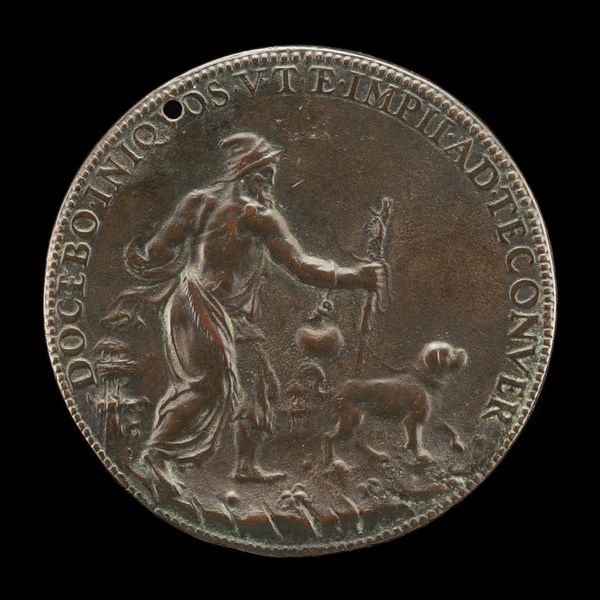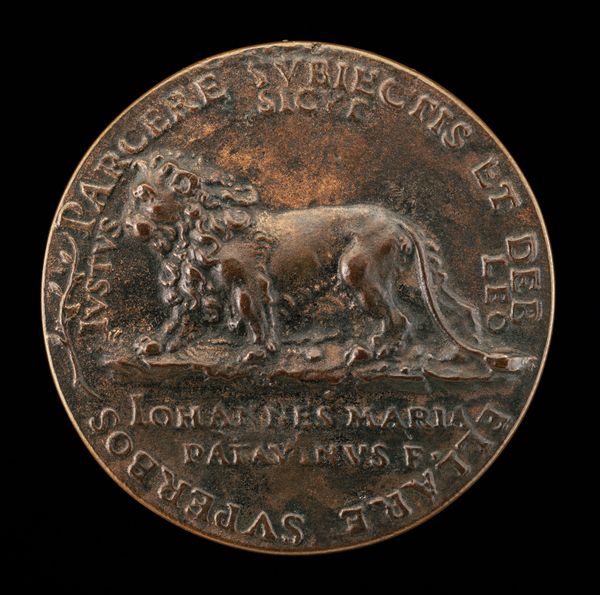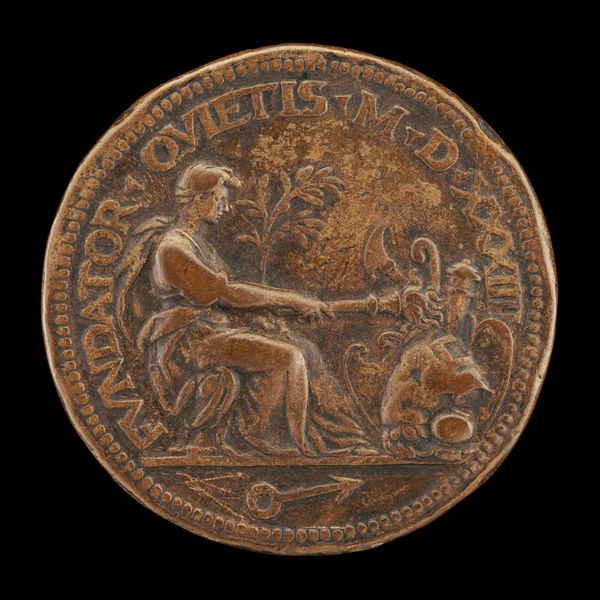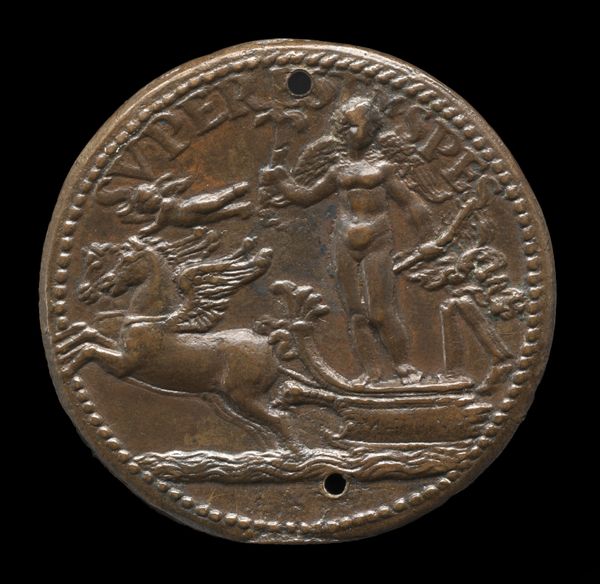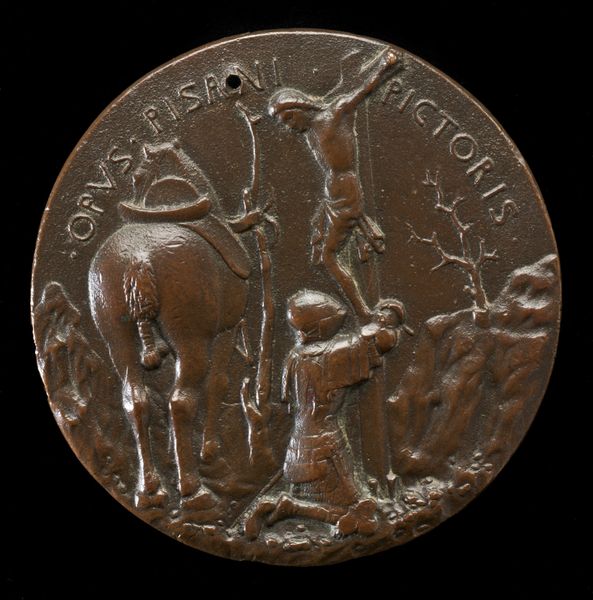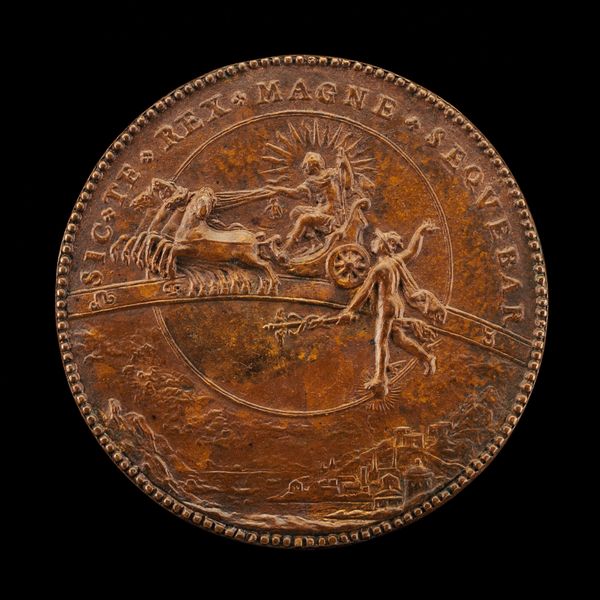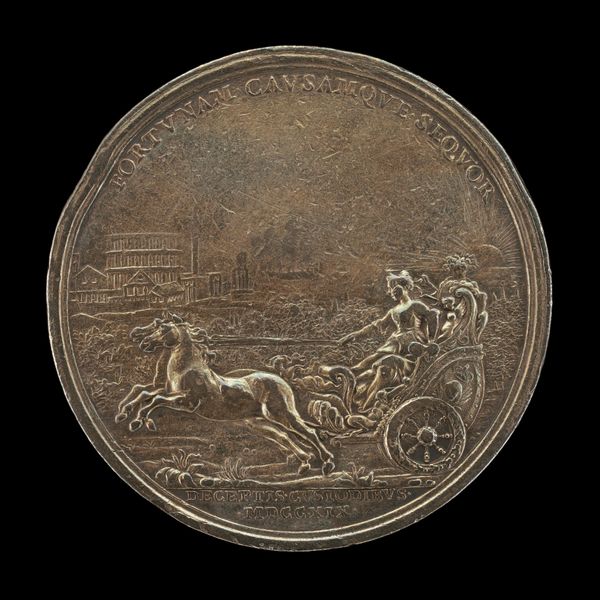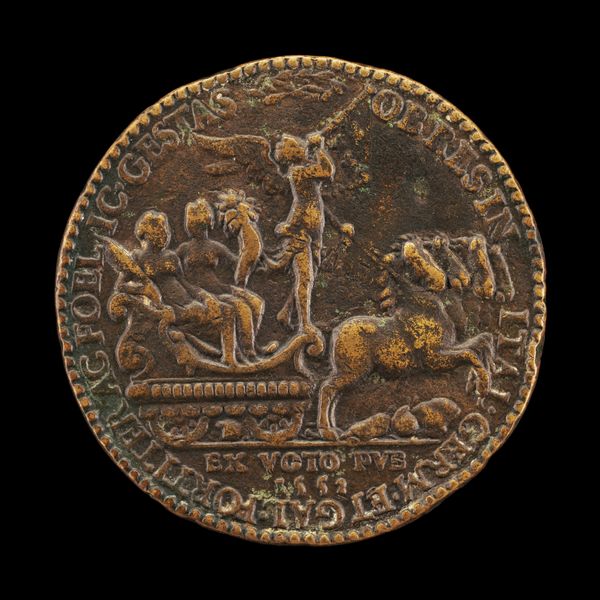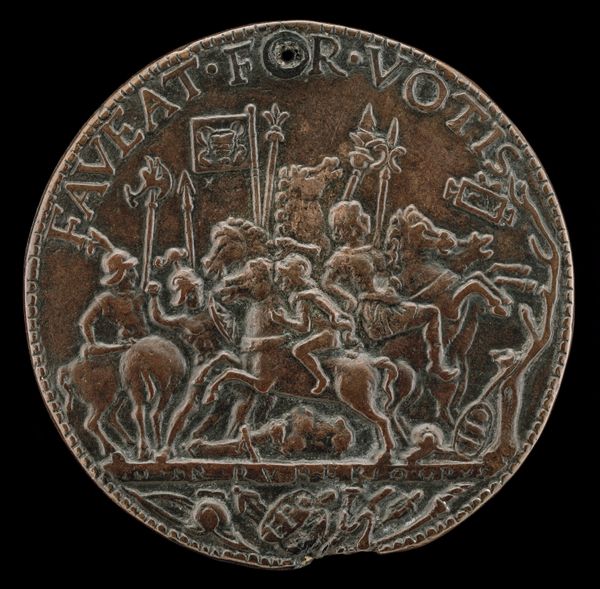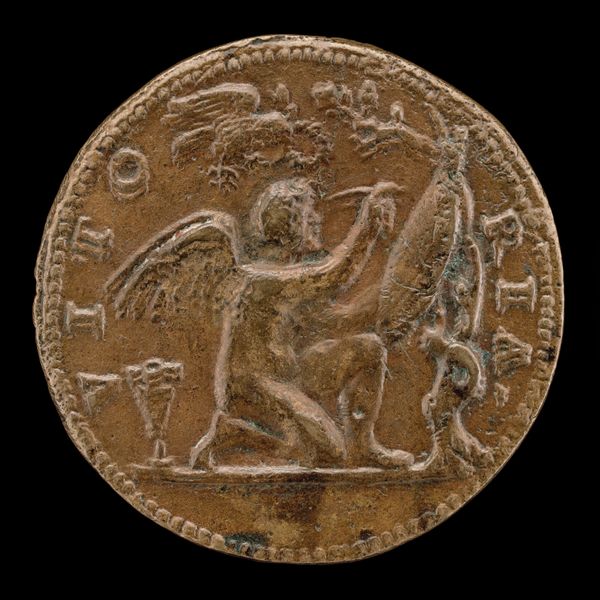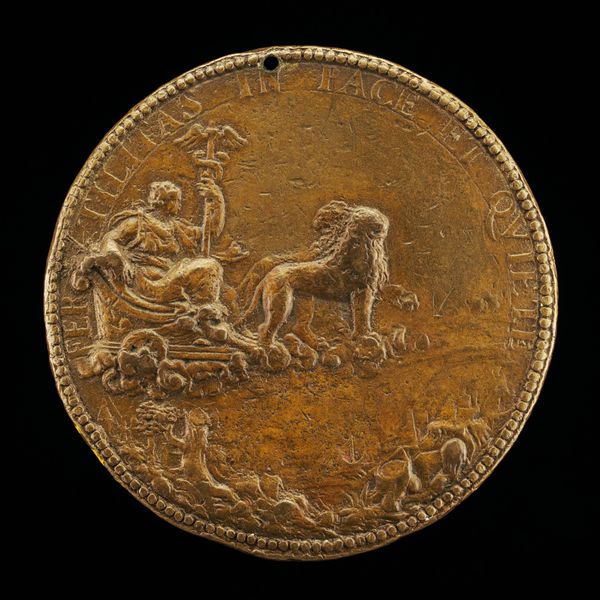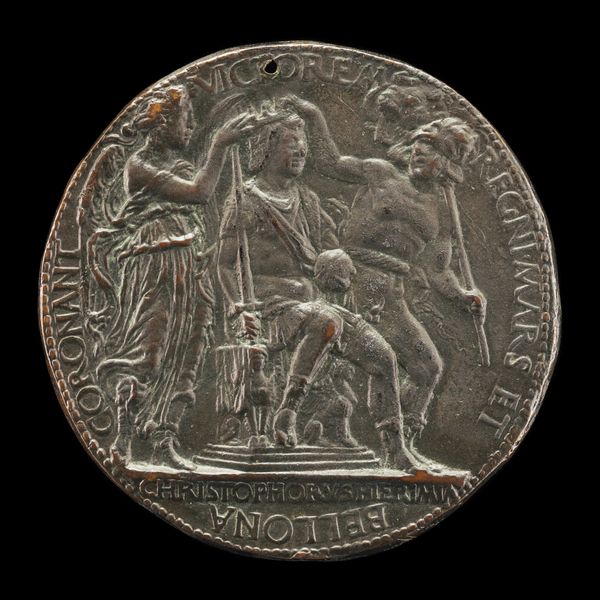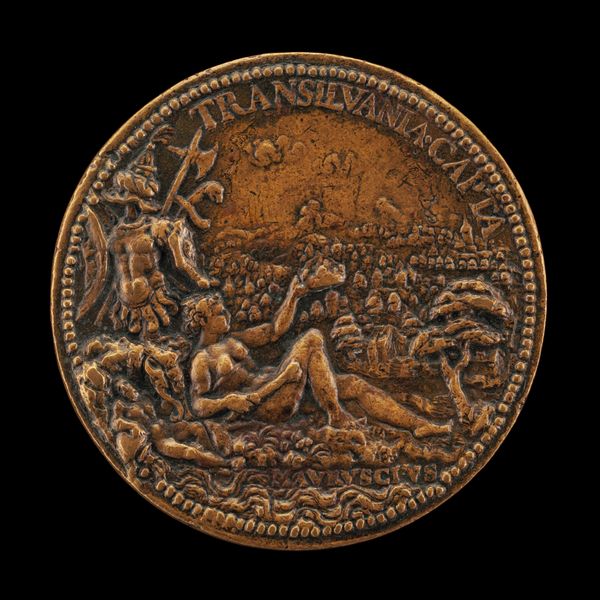![Jupiter in a Car Drawn by Eagles [reverse] by Francesco Francia](/_next/image?url=https%3A%2F%2Fd2w8kbdekdi1gv.cloudfront.net%2FeyJidWNrZXQiOiAiYXJ0ZXJhLWltYWdlcy1idWNrZXQiLCAia2V5IjogImFydHdvcmtzLzI1NmVkYjdkLWY5ZWMtNGM5NC1hZGNlLTUxZWNmOWIyNThkZS8yNTZlZGI3ZC1mOWVjLTRjOTQtYWRjZS01MWVjZjliMjU4ZGVfZnVsbC5qcGciLCAiZWRpdHMiOiB7InJlc2l6ZSI6IHsid2lkdGgiOiAxOTIwLCAiaGVpZ2h0IjogMTkyMCwgImZpdCI6ICJpbnNpZGUifX19&w=3840&q=75)
relief, bronze, sculpture
#
portrait
#
medal
#
sculpture
#
relief
#
bronze
#
figuration
#
11_renaissance
#
sculpture
#
history-painting
#
italian-renaissance
Dimensions: overall (diameter): 5.96 cm (2 3/8 in.) gross weight: 58.2 gr (0.128 lb.) axis: 12:00
Copyright: National Gallery of Art: CC0 1.0
Curator: Here we have "Jupiter in a Car Drawn by Eagles [reverse]", a bronze relief crafted between 1508 and 1510 by Francesco Francia during the Italian Renaissance. What are your initial thoughts? Editor: The intensity strikes me first. Despite its small scale, there’s an overwhelming sense of classical power rendered with striking detail. Curator: Francia's handling of the bronze itself is superb. The texture implies so much about the labor involved—the casting, the chasing, the creation of the mold… we can practically feel the artisan’s hand shaping this narrative. Editor: Absolutely. Considering its Renaissance origins, this piece speaks volumes about the period's obsession with power, expressed via classical mythology. We have Jupiter, the king of the gods, but consider the gender dynamics—divine male authority visibly displayed and celebrated. The eagles become symbols not only of power but of a forceful, even aggressive dominion. Curator: The inscription encircling the image also adds another layer, suggesting something beyond mere aesthetic appreciation, probably commissioning details or something directly related to its original function as a medal. It would be helpful to know how these materials impacted their production as we see labor depicted in a time when religious narratives defined culture so prominently. Editor: True. Looking closely, the depiction of the clouds and even the posture of Jupiter convey an assertive and controlling figure taming nature and wildness for his purposes. Perhaps it even says something about society's self-image at the time? Who commissioned this, and what statement did they seek to make? Curator: We are left to ponder about access to labor. Was the material an issue, did they struggle in the creative process to render the original idea, or did they enjoy their work within a particular workshop? It does not speak for itself; this art asks as many questions as it answers. Editor: Indeed, and while Francia’s technical skill is evident, understanding the historical moment enriches our view beyond simple appreciation, doesn't it? We confront power, gender, and the social undercurrents of Renaissance Italy right here on this tiny bronze disc. Curator: By appreciating this artefect as more than simply representation or beauty we have created room to value production and labor to re-analyze our contemporary struggles in manufacturing, distribution, and valuation. Editor: I couldn't agree more. This image resonates powerfully across the centuries and continues inviting reflections about labor, power, and control through image-making.
Comments
No comments
Be the first to comment and join the conversation on the ultimate creative platform.
